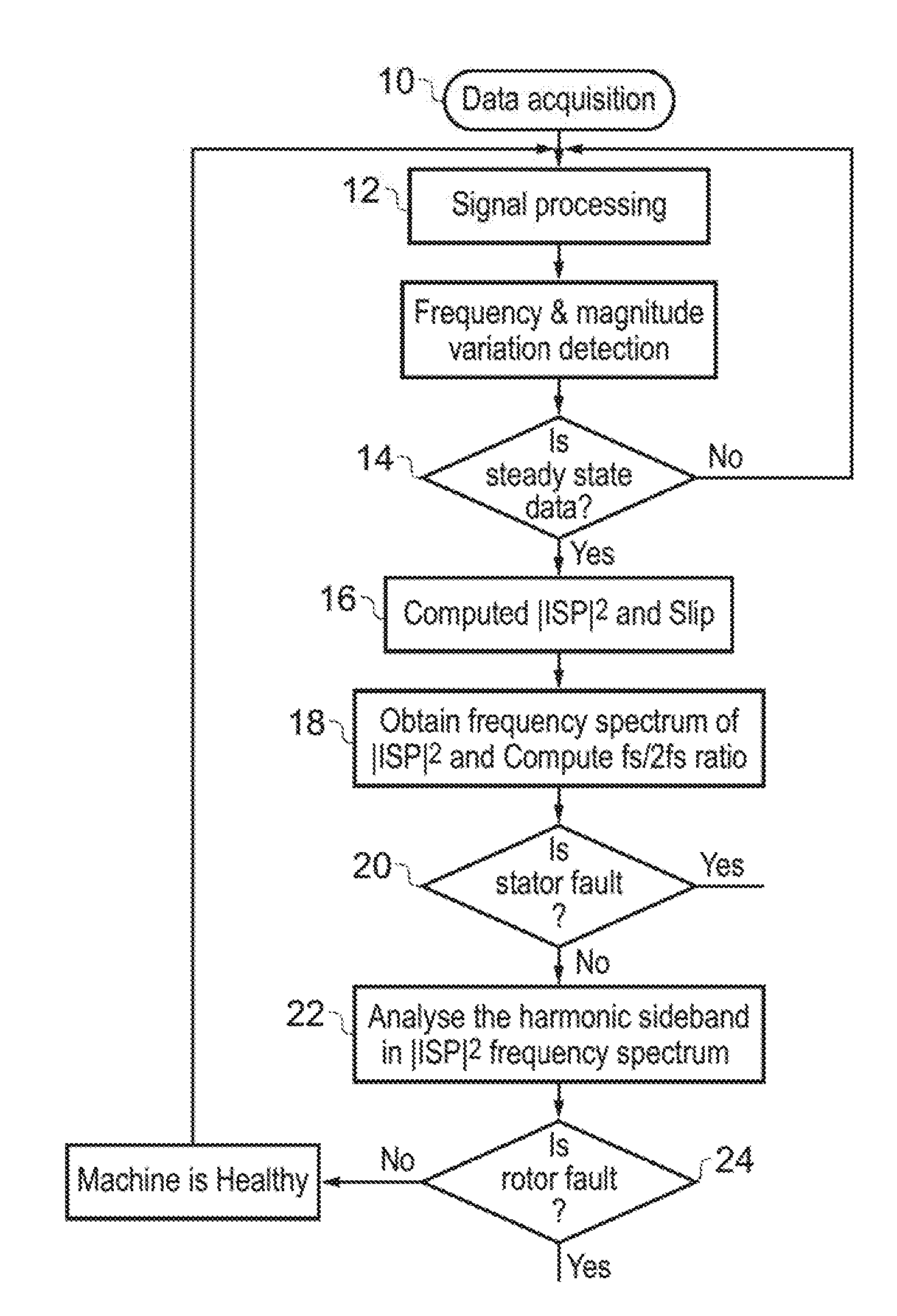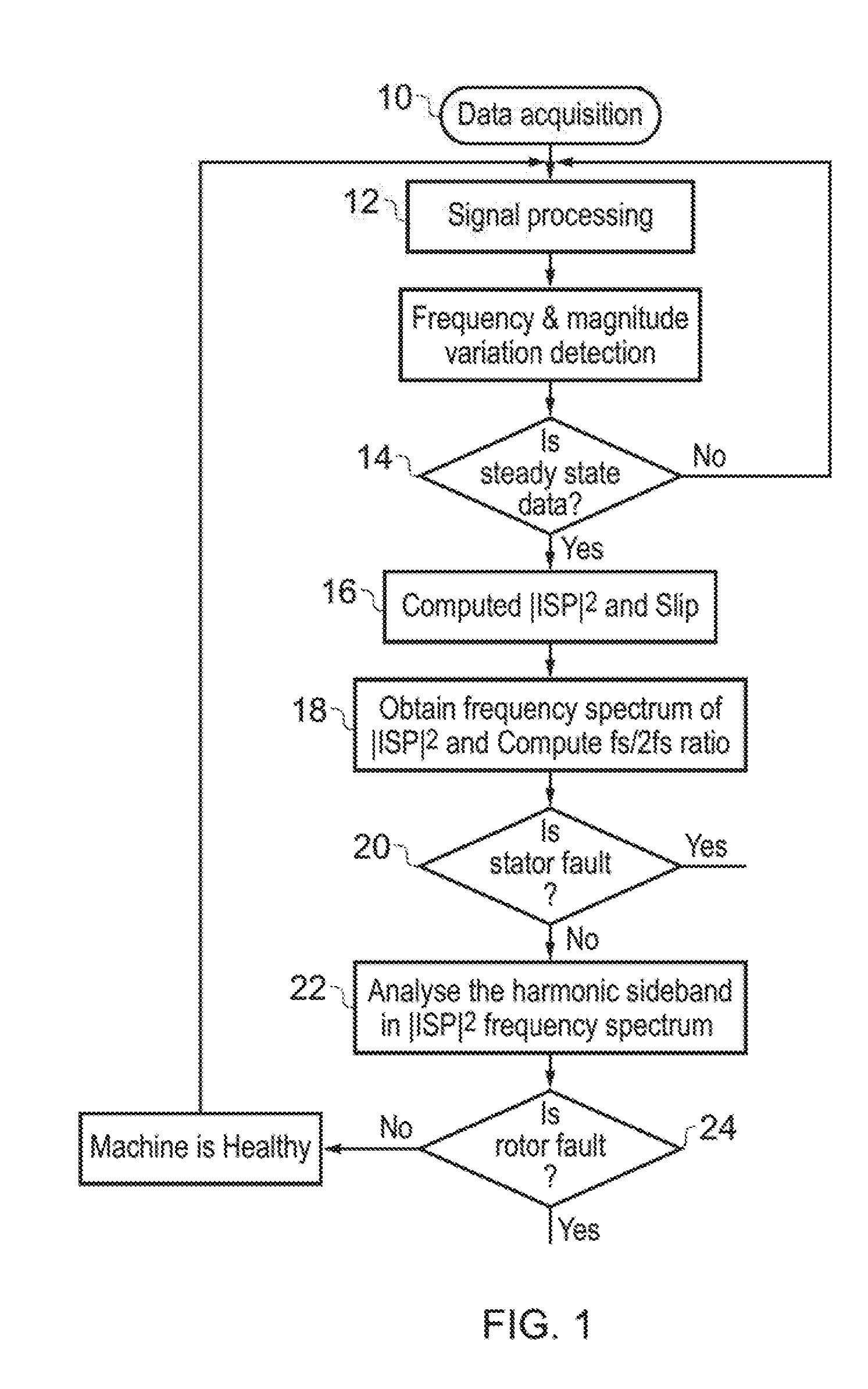Fault detection and diagnosis in an induction motor
a fault detection and fault technology, applied in the field of induction motors, can solve the problems of increasing maintenance costs, adding cost and complexity to the machine, and inducing motors, so as to reduce computational power, reduce cost and complexity, and operate healthy
- Summary
- Abstract
- Description
- Claims
- Application Information
AI Technical Summary
Benefits of technology
Problems solved by technology
Method used
Image
Examples
Embodiment Construction
[0079]A method of detecting rotor and / or stator faults in an induction motor according to a first aspect of the present disclosure is described with reference to FIG. 1.
[0080]The method makes use of the Instantaneous Space Phase Square (|ISP|2) of the stator current. The |ISP|2 of stator current is calculated by converting the stator phase currents into phasors and then obtaining the square root for the squared sum of the three phase current phasors. The procedure for obtaining the |ISP|2 is given below, and utilises the stator phase currents P1, P2, and P3, for phases a, b, and c, respectively.
P1=Iasin(ωt−φ1)*(cos(0)+jsin(0)) (1)
P2=Ibsin(ωt−φ2)*(cos(2π / 3)+jsin(2π / 3)) (2)
P3=Icsin(ωt−φ3)*(cos(−2π / 3)+jsin(−2π / 3)) (3)
|ISP|2=(√(real(P1+P2+P3)2+img(P1+P2P3)2))2 (4)
[0081]The |ISP|2 has both DC and AC components, which are given by the following equations respectively:
DC=½[Ia2+Ib2Ic2]+½[IaIbcos(φ2+φ1)+IaIccos(φ3−φ1)+IbIccos(φ2−φ3) (5)
AC=−½[Ia2cos(2ωt−2φ1)+Ib2cos(2ωt−2φ2)+Ic2cos(2...
PUM
 Login to View More
Login to View More Abstract
Description
Claims
Application Information
 Login to View More
Login to View More - R&D
- Intellectual Property
- Life Sciences
- Materials
- Tech Scout
- Unparalleled Data Quality
- Higher Quality Content
- 60% Fewer Hallucinations
Browse by: Latest US Patents, China's latest patents, Technical Efficacy Thesaurus, Application Domain, Technology Topic, Popular Technical Reports.
© 2025 PatSnap. All rights reserved.Legal|Privacy policy|Modern Slavery Act Transparency Statement|Sitemap|About US| Contact US: help@patsnap.com



